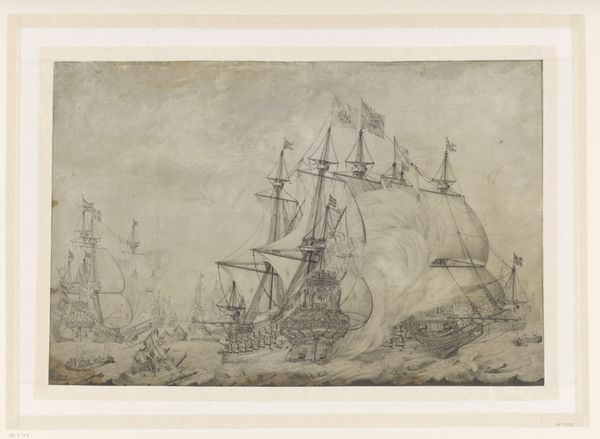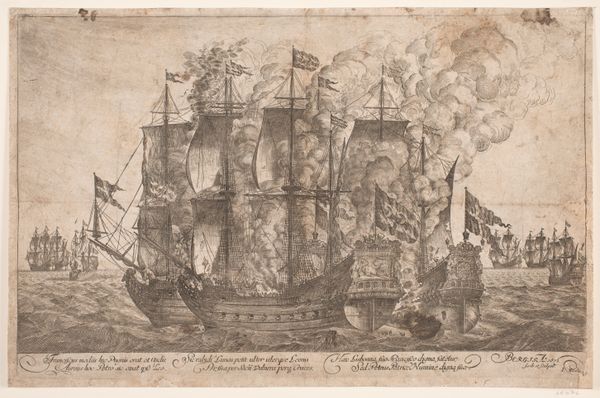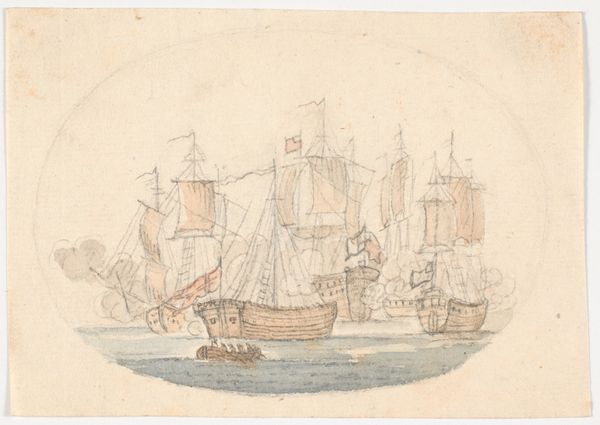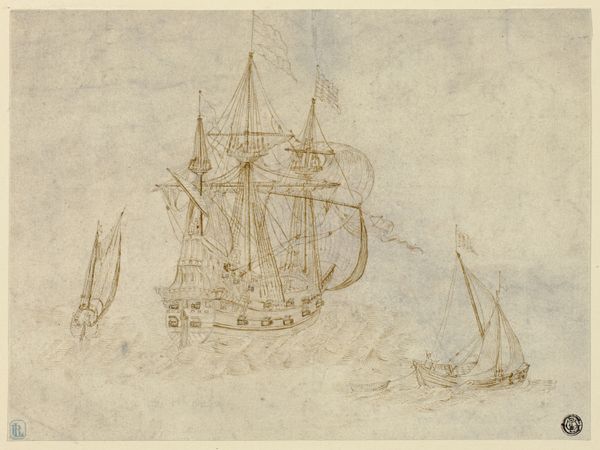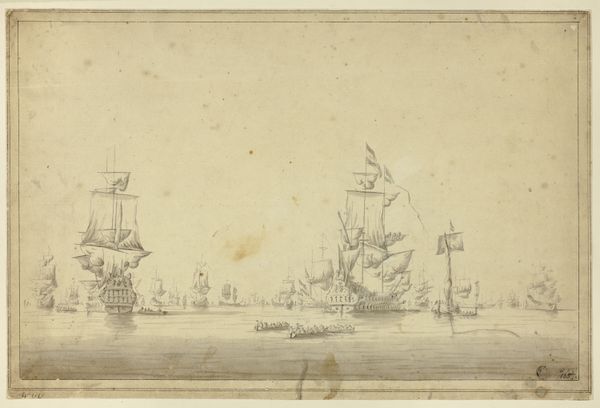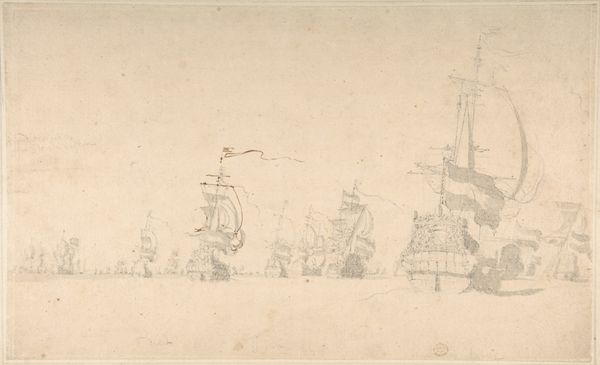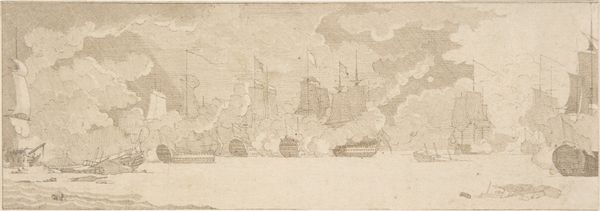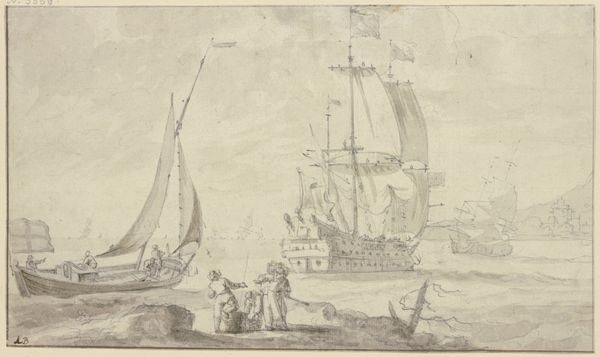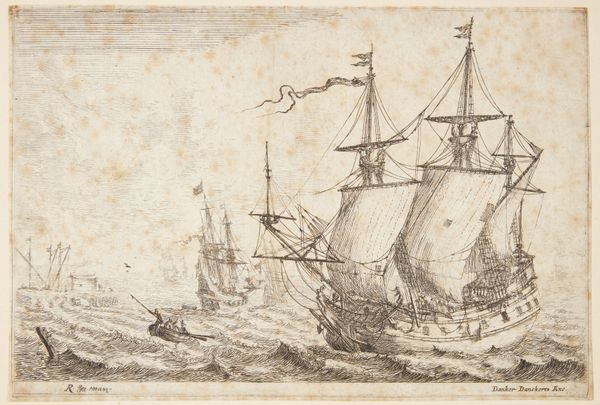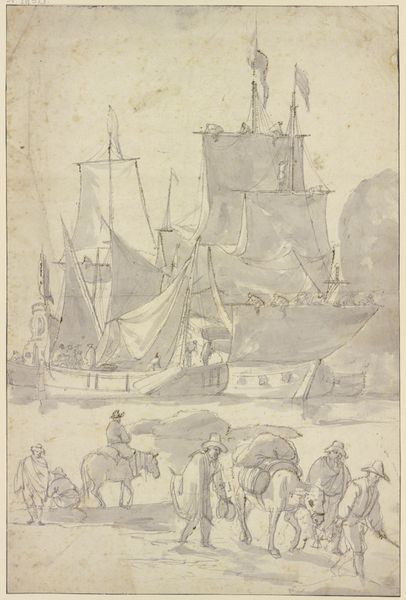
Study for the "Attack on Copenhagen" 1801 - 1802
0:00
0:00
drawing, print, ink, pen
#
drawing
# print
#
landscape
#
ink
#
romanticism
#
pen
#
history-painting
Dimensions: Sheet: 10 1/4 x 17 1/2 in. (26 x 44.5 cm)
Copyright: Public Domain
Editor: This is Edward Francis Burney's "Study for the 'Attack on Copenhagen'," created between 1801 and 1802, using pen, ink, and drawing. It's currently housed at the Metropolitan Museum of Art. The detail is amazing, but the scene feels so… chaotic and destructive. What do you see in this piece beyond the immediate impression of naval warfare? Curator: It's important to recognize that history paintings like this often serve as cultural and political tools. The glorification of naval conflict, particularly in the Romantic era, served to reinforce notions of national strength and imperial power. How might we interpret the "attack" itself, not just as a military engagement, but as a symbolic assertion of dominance? Editor: I hadn't considered that it could be more than just a depiction of an event. But the cherubs flanking the scene seem odd juxtaposed with such a violent scene, almost like an advertisement. What's their purpose here? Curator: Exactly. Those cherubs are a calculated move. In this context, they’re less innocent and more aligned with justifying the violence and disruption to political structures, and promoting empire building. Do they romanticize war or soften the harsh reality of it for those at home? Editor: So, Burney's piece isn't just a study of a battle; it's a statement about power, viewed through a specific ideological lens? That shifts my whole perspective. I guess art really is never neutral. Curator: Precisely. By critically examining these historical artworks, we can understand how they have shaped collective memory and perpetuated certain narratives of power and identity. It invites a necessary, more considered questioning of everything else we think we know.
Comments
No comments
Be the first to comment and join the conversation on the ultimate creative platform.
